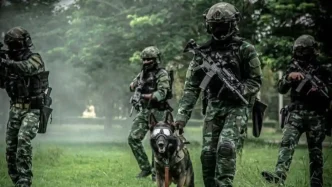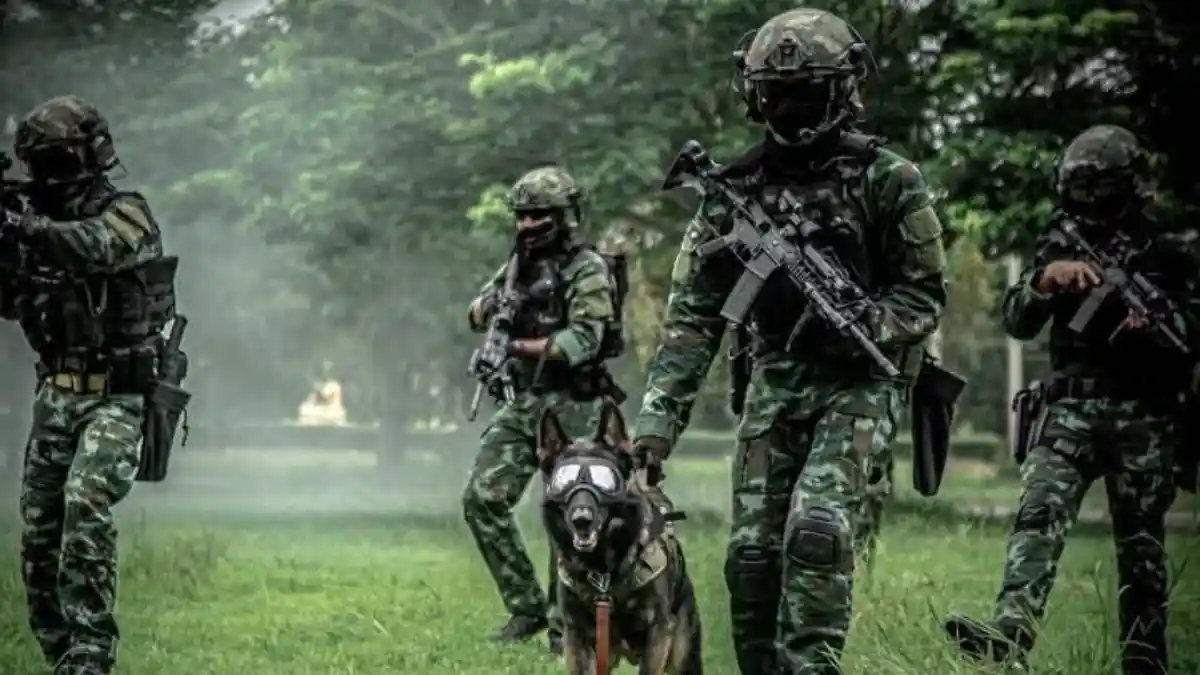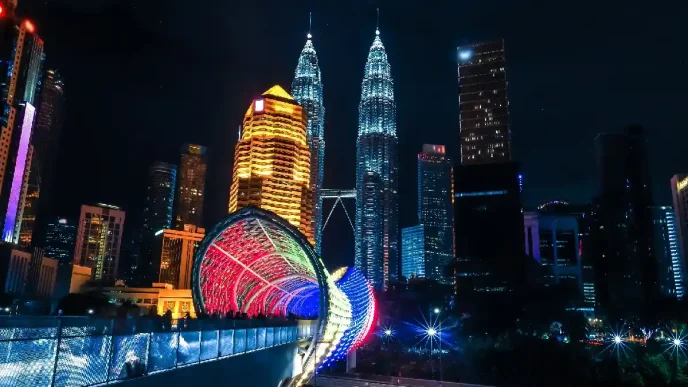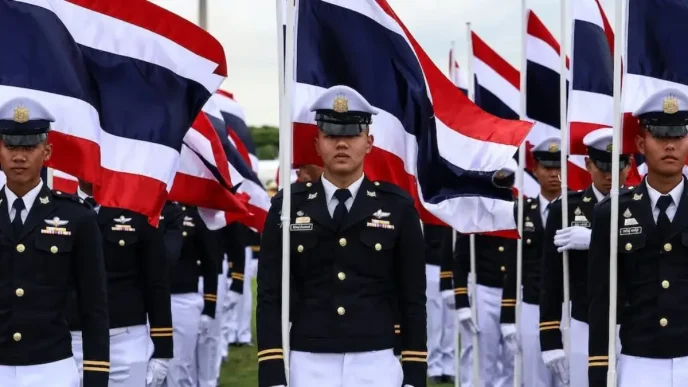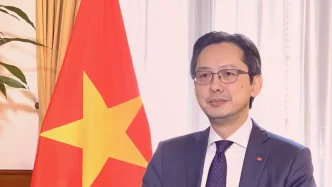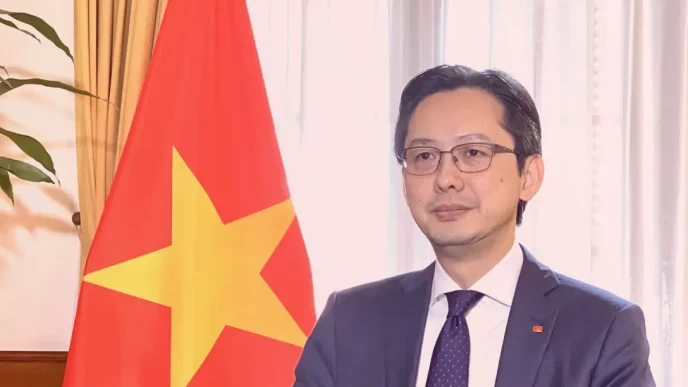In a significant diplomatic move, Malaysia has positioned itself as a mediator in the ongoing border dispute between Thailand and Cambodia, with high-level military talks held in Thailand’s Ubon Ratchathani province on July 31, 2025. Gen Mohd Nizam bin Jaffar, Malaysia’s Chief of Defence Forces, met with Thai military leaders to address escalating tensions along the contentious border, particularly around disputed areas near the Ta Muen Thom Temple. With both nations accusing each other of violations, Malaysia’s intervention signals a broader ASEAN effort to stabilize the region.
High-Level Talks Amid Rising Tensions
The meeting at Wing 21 in Ubon Ratchathani saw Gen Mohd Nizam bin Jaffar engaging with Lt Gen Boonsin Padklang, Commander of Thailand’s Second Army Region. According to a statement from Royal Thai Army spokesperson Maj Gen Winthai Suwaree, the discussions focused on the origins of the conflict, which have been exacerbated by differing interpretations of border maps. Lt Gen Boonsin outlined Thailand’s perspective, emphasizing historical disagreements over territorial boundaries and proposing solutions to de-escalate the situation.
Thailand reiterated its commitment to peace, maintaining that any border violations would be addressed through formal protests in line with existing memoranda of understanding (MoU). Thai officials also raised concerns over Cambodia’s actions, including alleged military deployments and the placement of landmines in disputed areas, which they claim breach international agreements such as the Ottawa Convention on anti-personnel mines. Additionally, Cambodia’s organization of symbolic civilian demonstrations near the Ta Muen Thom Temple has been cited as a source of heightened tensions, particularly after Thailand closed access to the area for safety reasons, a decision that reportedly led to clashes initiated by Cambodian forces.
Gen Nizam expressed a balanced understanding of both nations’ positions, advocating for cooperative mechanisms to resolve the dispute. He proposed that Thailand and Cambodia utilize coordination channels, potentially involving Thai and Malaysian military attachés or a designated team, to address provocations and ease tensions. Malaysia’s readiness to assist was underscored, with Gen Nizam emphasizing that the success of any ceasefire hinges on mutual cooperation from both parties.
ASEAN’s Role and Ceasefire Monitoring
A key outcome of the discussions was an agreement to deploy ASEAN military attachés to observe the situation along the Thailand-Cambodia border. This initiative, set to precede the General Border Committee (GBC) meeting scheduled for August 4, 2025, aims to provide an impartial assessment of the ground realities. Malaysia is also preparing to send a team of foreign military attachés alongside an ASEAN Monitoring Team to oversee the ceasefire and report findings to member states, a move intended to ensure transparency and accountability.
In a subsequent meeting in Bangkok with Lt Gen Amarit Boonsuya, Commander of Thailand’s First Army Region, Gen Nizam reiterated Malaysia’s willingness to serve as a neutral mediator. Lt Gen Amarit briefed his Malaysian counterpart on the current status of the ceasefire, affirming Thailand’s strict adherence to the agreement and expressing support for the establishment of the observation team. He also shared insights from a recent meeting with the Commander of Cambodia’s Fifth Military Region, though specific details of those discussions remain undisclosed.
Malaysia’s proactive stance extends beyond observation. Gen Nizam outlined several forward-looking recommendations, including encouraging Thailand to engage in informal communications with Cambodia to foster long-term trust. This approach, while not a formal resolution mechanism, could pave the way for more constructive dialogue and reduce the likelihood of misunderstandings escalating into conflict.
Humanitarian Concerns and Regional Stability
During the talks, Malaysia raised questions about the status of Cambodian soldiers reportedly in Thai custody. Lt Gen Boonsin assured Gen Nizam that the Prisoners of War were being treated in accordance with humanitarian principles and that their repatriation would follow international legal frameworks. This exchange highlights the broader humanitarian dimensions of the border dispute, where military actions have direct consequences for individuals caught in the crossfire.
Cambodian defence ministry spokeswoman Maly Socheata said Thursday that talks were under way for the release of 20 soldiers. In a bizare twist, the Cambodian soldiers handed themselves over to the Royal Thai Military, after the ceasefire was brokered. “We will do our best to continue negotiations with the Thai side in order to bring all our soldiers back home safely and as soon possible” she told a press briefing. “We call on the Thai side to send all 20 military personnel back to Cambodia as soon possible.” The Cambodian soldiers surrendered around 7:50 am on Tuesday, she said, nearly eight hours after the ceasefire came into effect. Thailand alleges that the Cambodian soldiers surrendered after they ran out of ammunition.
The Thailand-Cambodia border conflict is emblematic of deeper regional challenges within ASEAN, where historical grievances and territorial disputes often test the bloc’s unity. The area near the Ta Muen Thom Temple, a site of cultural and historical significance to both nations, has long been a flashpoint. Past incidents have seen military buildups, skirmishes, and diplomatic standoffs, with civilian populations on both sides bearing the brunt of insecurity and restricted access to shared cultural heritage.
United Nations High Commissioner for Human Rights, Volker Turk urged the neighboring nations to implement their ceasefire deal in full and take rapid steps towards building lasting confidence and peace. “This crucial agreement must be fully respected, in good faith, by both sides, as diplomatic efforts continue, in a bid to resolve the root causes of the conflict” he said.
Malaysia’s involvement as a mediator is not without precedent. As a fellow ASEAN member with no direct stake in the disputed territory, Malaysia is well-positioned to facilitate dialogue. Its military leadership’s emphasis on cooperative mechanisms and ceasefire monitoring reflects a pragmatic approach, prioritizing de-escalation over immediate resolution of the underlying territorial claims. However, the effectiveness of these efforts will depend on the willingness of both Thailand and Cambodia to engage in good faith, a factor that remains uncertain given the recent history of mutual accusations.
Context of the Conflict
The border dispute between Thailand and Cambodia dates back decades, rooted in colonial-era mappings and post-independence territorial assertions. The area around the Ta Muen Thom Temple, located in Thailand’s Surin province near the Cambodian border, has been a recurring point of contention. Both nations claim historical rights to the site, with overlapping claims often leading to military posturing and diplomatic friction. While international rulings, such as those from the International Court of Justice in the 1960s regarding the nearby Preah Vihear Temple, have sought to clarify ownership, smaller border areas remain contested, fueling periodic escalations.
Recent tensions have been exacerbated by domestic political dynamics in both countries. In Thailand, border security is a matter of national pride, often leveraged by political and military leaders to rally public support. Similarly, in Cambodia, defending territorial integrity resonates strongly with nationalist sentiments, particularly under the long-standing leadership of the Cambodian People’s Party. These internal pressures complicate efforts to reach a lasting agreement, as any perceived concession risks domestic backlash.
Against this backdrop, ASEAN’s role as a regional stabilizer becomes critical. The organization’s principle of non-interference limits its ability to impose solutions, but initiatives like the deployment of military attachés and monitoring teams demonstrate a collective commitment to preventing conflict from spiraling out of control. Malaysia’s leadership in this context could set a precedent for how ASEAN addresses intra-regional disputes, potentially strengthening the bloc’s mechanisms for conflict resolution.
Challenges Ahead
Despite the positive steps taken during the July 31 meetings, significant challenges remain. The deployment of landmines, if confirmed, represents a serious violation of international norms and a direct threat to civilian safety. Thailand’s allegations regarding Cambodia’s military actions in disputed areas will need to be independently verified by the ASEAN monitoring team, a process that could itself become a point of contention if either side disputes the findings.
Moreover, the symbolic civilian demonstrations near the Ta Muen Thom Temple underscore the cultural and emotional stakes of the dispute. These actions, while non-violent, serve as a reminder that the conflict is not solely a military or diplomatic issue but one deeply tied to national identity and historical memory. Addressing these underlying sentiments will require more than ceasefire agreements or border demarcations; it demands sustained efforts to build trust and mutual understanding at both governmental and community levels.
Malaysia’s proposal for informal communication channels offers a potential pathway, but its success is far from guaranteed. Both Thailand and Cambodia have historically been reluctant to cede ground, literally or figuratively, in border negotiations. The upcoming GBC meeting on August 4 will be a critical test of whether the momentum from the recent talks can translate into actionable progress.
Looking Forward
As ASEAN prepares to deploy its observation teams, the international community will be watching closely to see if this marks a turning point in the Thailand-Cambodia border dispute. Malaysia’s role as a mediator, while promising, is only one piece of a complex puzzle. The path to lasting peace will require not just military restraint but also political will and a shared commitment to dialogue over confrontation.
For now, the focus remains on ensuring the ceasefire holds and preventing further escalations. With regional stability at stake, the actions of Thailand, Cambodia, and their ASEAN partners in the coming weeks will shape the trajectory of this long-standing conflict. Whether Malaysia’s diplomatic efforts can bridge the divide remains an open question, one that carries significant implications for peace in Southeast Asia.

